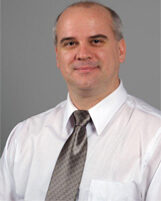According to the schedule, the professional researcher will be in charge of the following tasks :
1) 1-13 Acquisition of technical project avionics technologies
2) 1-15 Writing the interface control document (ICD)
3) 1-23 Study of the SDA communications
4) 1-24 Study of the message interoperability
5) 2-34 Development of laboratory bench test of transponder functionality using ATC 1400A
6) 2-41 Study and analyse of the external controls and displays required for SDA
7) 3-11 Comparison of DME test bench data with that of standard units
8) 3-12 Comparison of the transponder test bench data with that of standard units
9) 3-14 Assessment of aircraft and navaid infrastructure
10) 3-15 Establishment of an issue tracking system and train research team members
11) 3-21 Organization of interfaces to Nav Canada/Transport Canada/Industry Canada
12) 3-22 Analysis of “off-side” avionics and post processing of raw data from test flight
13) 3-23 Comparison of test flight data with that of standard units
14) 4-41 Validation of the complete multi-system with DRFS on Aircraft
15) 4-44 Editing of the Final Report
The main objective of the professional engineer’s activities is to ensure that the theoretical developments done by the research team will lead to the final goal: a new architectural design of a software defined aviation transceiver. He should work on the most important theoretical subjects of the project, from the initial architectural design of the software modules and their eventual integration in the SDR platform. One of the tasks of the professional engineer is to ensure (together with the professors conducting the research project and the industrial groups) that the research subjects proposed during the four years advance at reasonable pace. He should also support the research team members during their research activities. He should always have a general view of the global project. He will know about the work of the trainee, Master’s and Ph.D. students in theoretical areas. He will participate to the post-processing of raw data recorded during flight testing and the corresponding analysis. During the second year, the engineer will participate also in the post-processing of raw data recorded during the flight tests. In the last year, the engineer will focus mainly on characterizing the flight test increased range, sensitivity and robustness aspects and on the improvement that could be done in order to obtain a simpler and more compact transceiver platform, using the simplified architecture.
![]()
